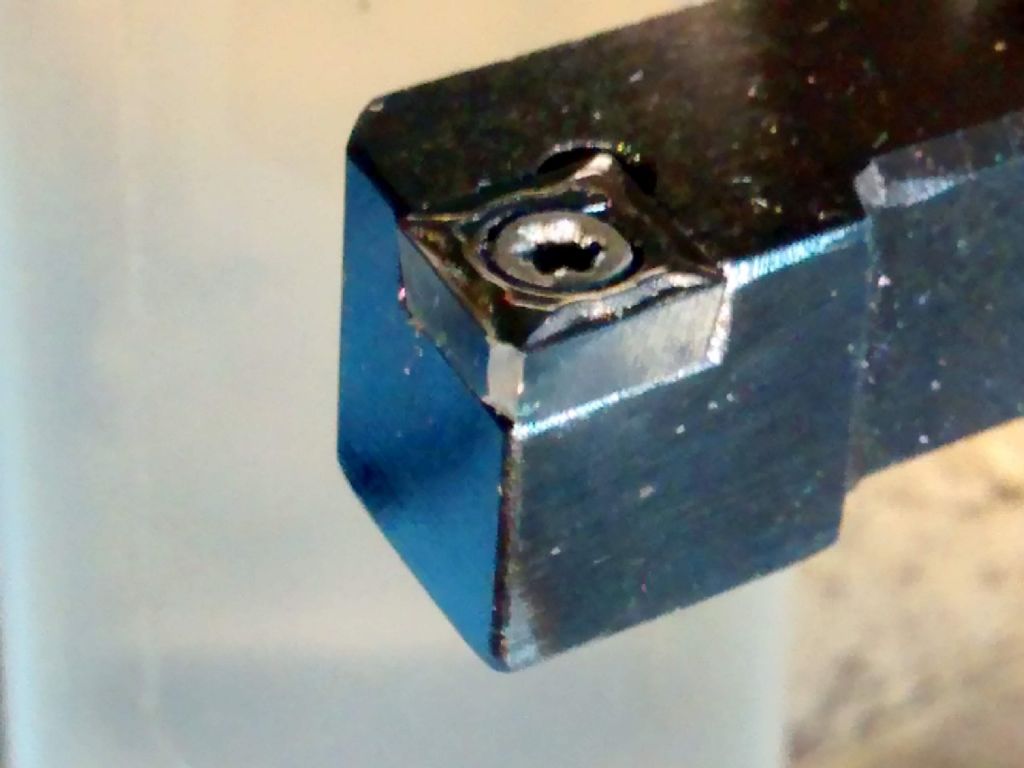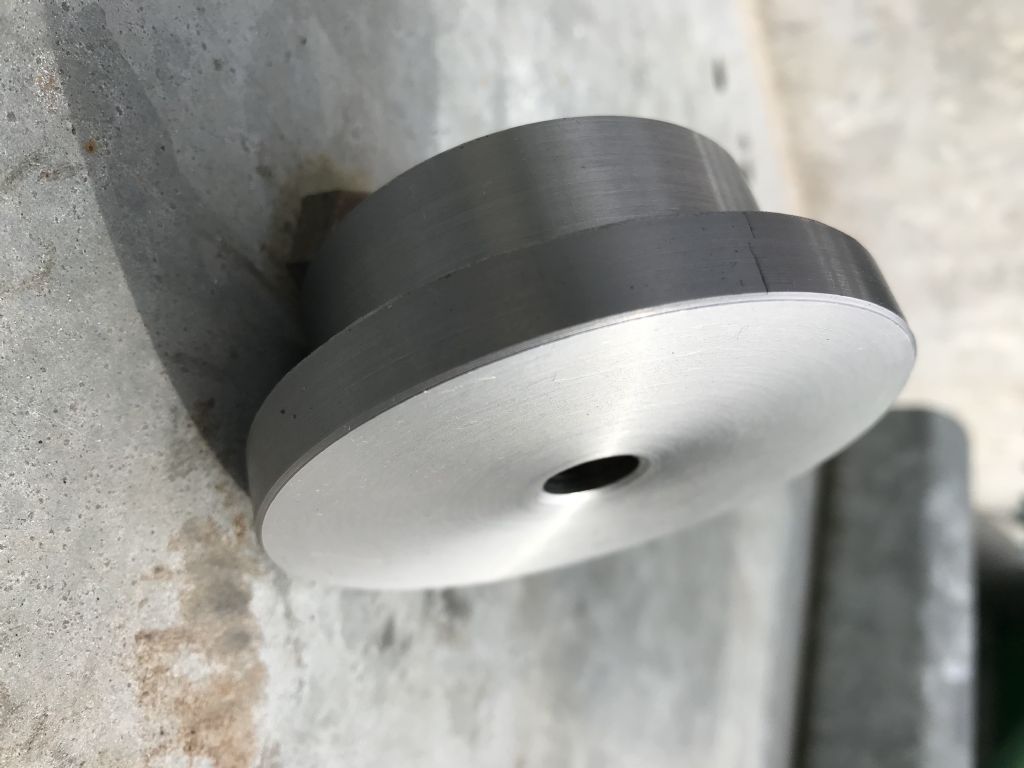By the looks of what you are doing, that steady support is not needed. Avoid where ever possible, cutting to the very centre unless it is needed. If it is not required to be flat to the centre, I use a centre drill and put a 2mm or 3mm diameter dimple in the end of the part. RPM wise, anything from 300 rpm to 600 rpm is plenty fast enough. You need a roughing out insert and a finishing insert. Roughing is often a 0.4mm radius. Using a water soluble type coolant will help reduce the heat of the work piece. Hand feed at a rate that will make little chips, not long curls. It maybe that you will need the smaller R0.2mm insert to get nice curled chips. Some where around 0.5 to 1mm on diameter will do that, but the depth of cut is limited to the power of your motor. For 1mm diameter of cut, you will need around 1 hp,/750 watt motor. If you have the 3/4 hp motor taking a 1mm cut I think is being unrealistic.
Use a new sharp edge for the finishing, and take the finish cuts at 1/2 to 1 radius per side and a feed rate of 1/4 of the radius as a feedrate. So if you use a R0.2mm insert, then taking a 0.2mm on diameter cut for the finish pass at around 0.5mm/rev at around 400 to 500 rpm will work well. Using a cutting oil for steel will aid in the surface finish, or a water based cutting oil at around 10% concentration will also give a good finish. 500 rpm at 0.05mm per rev will take about 1 min to travel 25mm.
I don"t run my Super 7 any faster than the highest speed on the spindle with the low speed of the motor to the clutch. I don"t run the faster speed from the Motor to the clutch on anything these days. Some materials will give a better finish with dull looking edge insert tools, but I mainly use the very sharp carbide for Aluminium on most steel's on my lathe. The coolant I use is one suitable for Titanium and steels and Non Ferrous metals works really well.
Neil
Peter Turvey.







